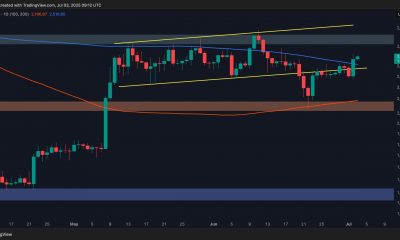Forex
Bolivia unveils measures to tackle sharpening dollar crisis


© Reuters. Marcelo Montenegro, Minister of Economy of Bolivia, holds a press conference, in La Paz, Bolivia February 20, 2024. REUTERS/Claudia Morales
By Monica Machicao
LA PAZ (Reuters) – Bolivia’s government set out on Tuesday a package of measures to spur investment and exports as it seeks to reverse a worsening dollar scarcity that has left shelves empty and workers unpaid.
The government of President Luis Arce said its plan, agreed with businesses, would aim to cut red tape for exports, increase investment in grains production, make diesel imports easier, and allow bigger trucks on the roads.
Reserves have plunged from a peak of some $15 billion a decade ago to under $2 billion now, eroded by sliding production and exports of , the mainstay of the Bolivian economy in the last 20 years.
Truckers have been striking in political capital La Paz over delayed pay, while Fitch slashed the country’s debt rating deep into ‘junk’ territory earlier this month, citing the slide in reserves levels that it said threatens economic stability.
“With these measures we will try to gradually moderate the shortage of dollars in the private sector,” Minister of Economy Marcelo Montenegro said on Tuesday, adding the government aimed to bring in up to $5 billion via the farming and mining sectors.
The problem is stark. Net total reserves have halved in the last year, and the cash amount is now under $200 million, according to the latest data. Most of the reserves are in gold.
Jaime Ascarrunz, president of Bolivia’s national chamber of commerce, said the business sector had been pushing measures to bolster exports and bring in hard currency.
“The lack of dollars is something that greatly worries us, especially in the import sectors,” he said.
In banks and on the streets many people said they could not access dollars, leading some to buy them on the black market, where the price of dollars is near 8 bolivianos, above the official rate of 6.96. Others said they could not get imported materials they need.
“Unfortunately we can’t bring in more at the moment due to the lack of dollars,” said La Paz veterinarian Fabiola Navia, pointing to half-empty shelves where medicines and medical supplies would normally be. “This is all the stock we have.”
Striking truckers in the city said the reserves slide was affecting the government more widely and holding up payments.
“The losses are in the millions,” said Ramiro Barrero, leader of the trucking union. “It’s been months that we’ve been without payment.”

 Forex3 years ago
Forex3 years agoForex Today: the dollar is gaining strength amid gloomy sentiment at the start of the Fed’s week

 Forex3 years ago
Forex3 years agoUnbiased review of Pocket Option broker

 Forex3 years ago
Forex3 years agoDollar to pound sterling exchange rate today: Pound plummeted to its lowest since 1985

 Forex3 years ago
Forex3 years agoHow is the Australian dollar doing today?

 Cryptocurrency3 years ago
Cryptocurrency3 years agoWhat happened in the crypto market – current events today

 World3 years ago
World3 years agoWhy are modern video games an art form?

 Commodities3 years ago
Commodities3 years agoCopper continues to fall in price on expectations of lower demand in China

 Economy3 years ago
Economy3 years agoCrude oil tankers double in price due to EU anti-Russian sanctions






























